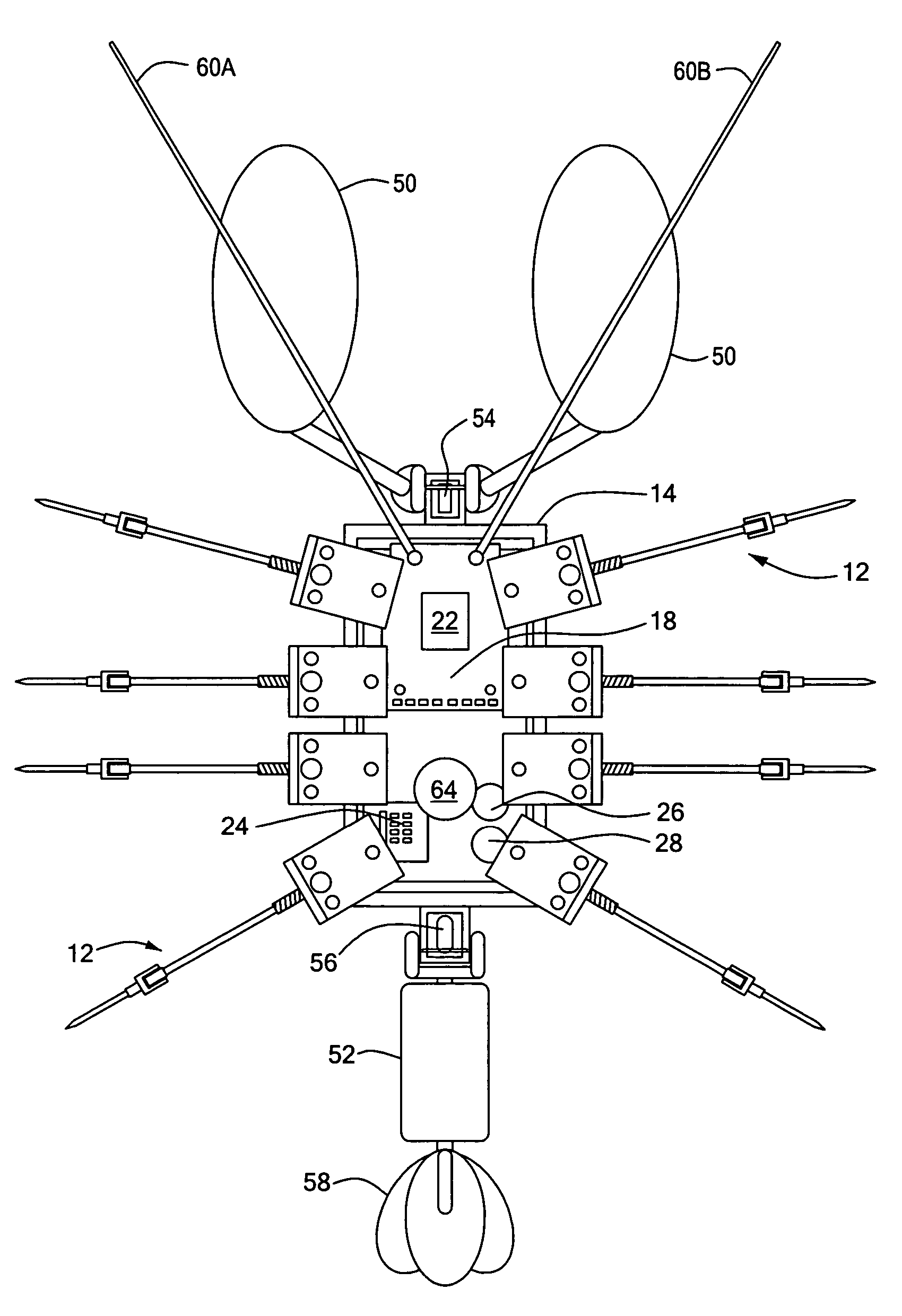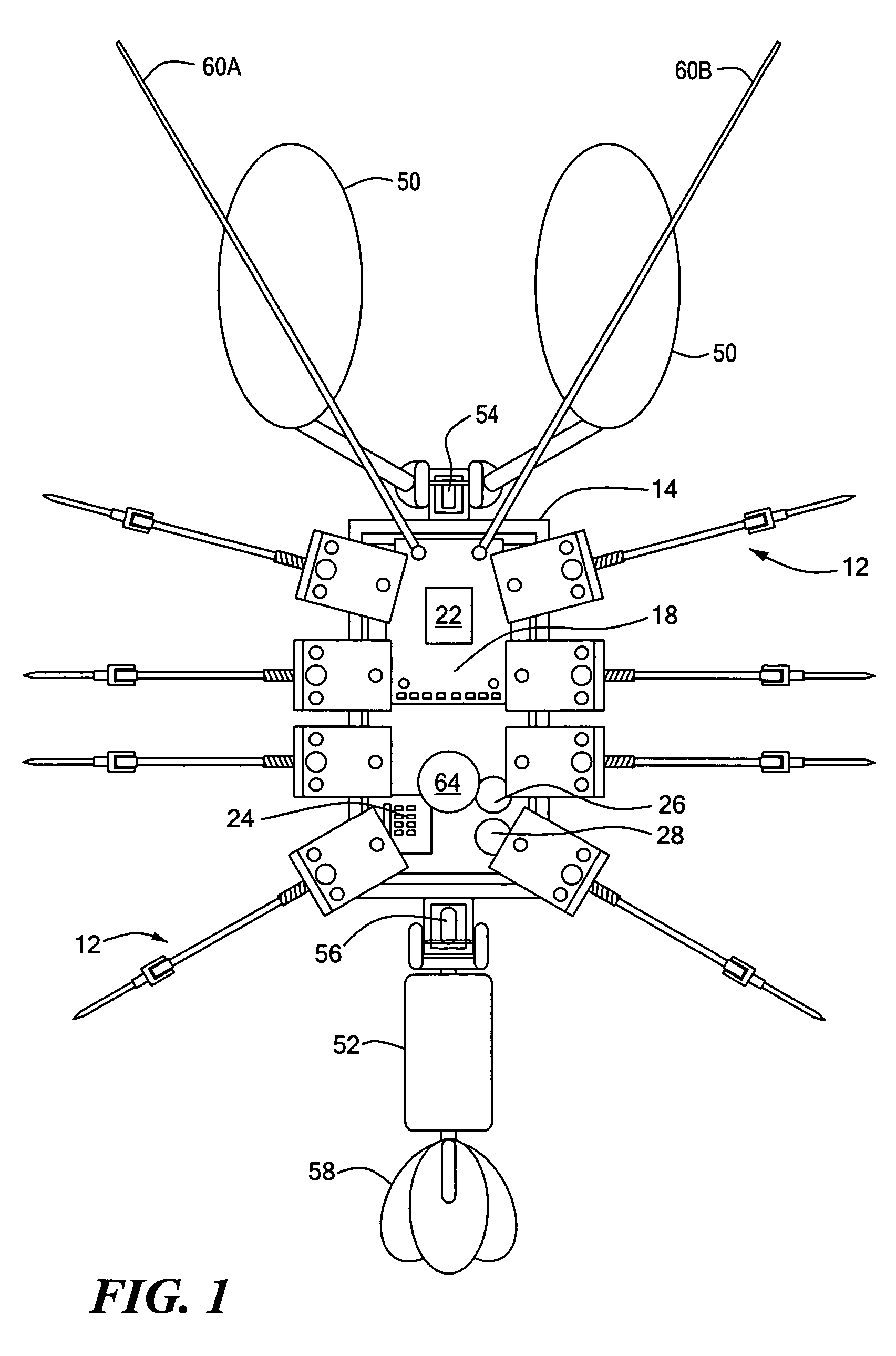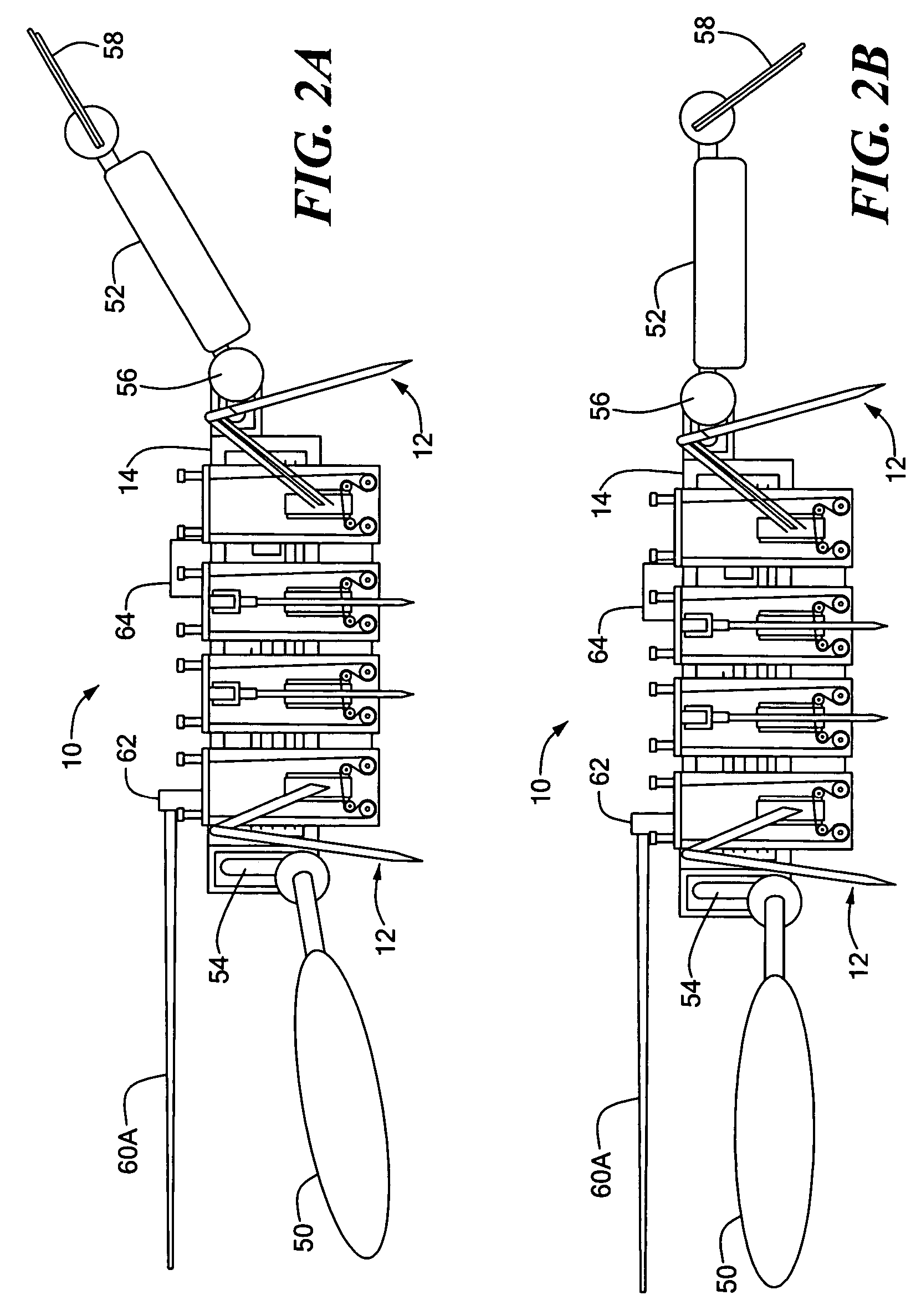Process and architecture of robotic system to mimic animal behavior in the natural environment
a robotic system and natural environment technology, applied in the field of robotic system to mimic animal behavior in the natural environment, can solve the problems of unsupported control methodologies, model animals have not employed neuronal codes derived from an analysis of the activity of neuronal circuits of model animals, etc., and achieve simple mechanical connection.
- Summary
- Abstract
- Description
- Claims
- Application Information
AI Technical Summary
Benefits of technology
Problems solved by technology
Method used
Image
Examples
Embodiment Construction
[0045]A biologically-based robotic architecture consists of five principal components, each to be described in detail below. These components are: a biomorphic plant; a neural circuit-based controller; myomorphic actuators; neuromorphic sensors; and a reactive behavioral sequencer.
(1) Biomorphic Plant
[0046]The biomorphic plant, or biomimetic or physical plant, is the vehicle structure which is based on an animal model adapted to a particular niche. The vehicle plants are typically composed of a hull, power supply, locomotory effectors, control surfaces and appendages, and adaptive sensors, which are generalized, and in many cases conserved among animal groups. The plant differs for underwater versus terrestrial applications with regard to the need for hydrodynamic control surfaces and a watertight electronics bay. In addition, the impact of buoyancy provides different requirements of actuator force necessary to mediate support against gravity versus translational propulsion. Due to ...
PUM
 Login to View More
Login to View More Abstract
Description
Claims
Application Information
 Login to View More
Login to View More - R&D
- Intellectual Property
- Life Sciences
- Materials
- Tech Scout
- Unparalleled Data Quality
- Higher Quality Content
- 60% Fewer Hallucinations
Browse by: Latest US Patents, China's latest patents, Technical Efficacy Thesaurus, Application Domain, Technology Topic, Popular Technical Reports.
© 2025 PatSnap. All rights reserved.Legal|Privacy policy|Modern Slavery Act Transparency Statement|Sitemap|About US| Contact US: help@patsnap.com



